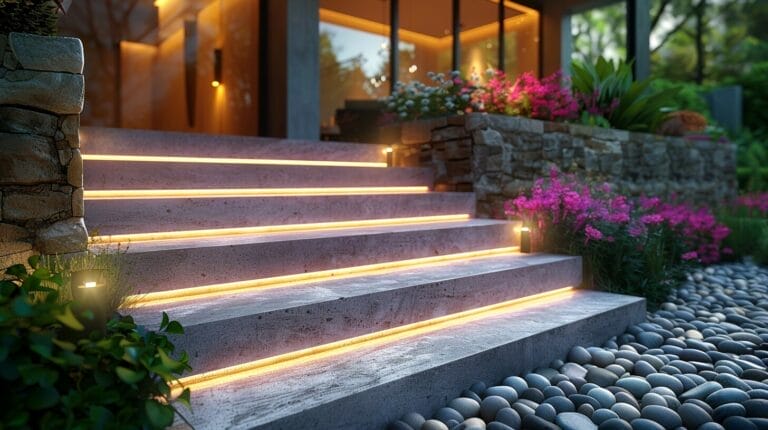How To Use a Left Handed Drill Bit: A Drill Master’s Guide
Are you in the middle of a critical project, trying to tackle a stripped screw that is stalling your progress? Don’t throw in the towel just yet, remember that screw extractors are specifically designed for these situations.
The left-handed drill bit, specially made screw extractors to use the hole of a difficult to remove bolt, could be your savior in dealing with the frustration of dealing with stubborn screws. In ‘our ‘How To Use a Left Handed Drill Bit’ guide, we will provide you with insights into how to use a left-handed drill bit effectively, removing a broken bolt or trying not to break it inside the bolt.
Key Takeaways
- Left-handed drill bits rotate counter-clockwise, making them essential for removing broken or stuck screws.
- Proper preparation, including selecting the correct bit size and setting up the drill in reverse mode, is crucial for using left-handed drill bits effectively.
- Mastering the technique of using left-handed drill bits involves positioning the bit correctly, applying constant pressure, and operating the drill at the right speed.
- Efficiency and precision in extracting bolts and screws are enhanced with left-handed drill bits; this reduces time and effort spent, especially when there’s a need to drill a broken screw, while providing greater control.
Understanding Left-Handed Drill Bits: An Essential Guide

Left-handed drill bits differ from their right-handed counterparts as they rotate in a counter-clockwise direction. This counter-clockwise rotation, or moving in the opposite direction, makes screw extractors essential for removing broken or stuck screws.
Screw extractors can also be used in situations where a standard right-handed bit might cause the material to bind or warp, ensuring a clean, precise hole every time in even the most difficult to remove screws.
Preparing To Use Left-Handed Drill Bits: Necessary Steps

Before using a left-handed drill bit, it’s essential to prepare:
- Select the correct bit size: Ensure the size of the bit matches the size of the hole you wish to drill.
- Set up your drill: Ensure the setting on your drill is switched to reverse.
- Safety precautions: Always wear safety goggles and gloves.
- Maintain a clean workspace: Keep your workspace clean and well-lit to reduce the risk of accidents.
Mastering the Technique: How to Use Left-Handed Drill Bits

Let’s dive right in and master the technique of using left hand drill bits, ensuring efficient, safe, and precise drilling operations. The use of a left-handed drill bit might seem challenging, but with our drill master’s guide, you can perfect the technique making it much easier to drill out broken screws.
We’re going to focus on two main steps in this comprehensive guide: positioning the drill using these chucks and executing the drilling process.
Positioning the drill involves setting the drill bit at the correct angle and ensuring it’s locked securely in the chuck. You’ll want to hold the drill firmly and apply constant, but not excessive, pressure.
Executing the drilling process with a left-handed drill bit makes it much easier as it is about operating the drill at the right speed, especially when dealing with threads and screw extractions. Start slow, gradually increasing the speed. Keep in mind that during the extraction process, tightening the drill in a gradual manner can be more effective. Remember, with left-handed drill bits, you need to operate the drill in reverse.
Let’s illustrate the steps in a table:
| Steps | Description |
|---|---|
| 1. Positioning the drill | Set the drill bit at the right angle and secure in the chuck. |
| 2. Holding the drill | Hold firmly and apply constant, but not excessive, pressure. |
| 3. Setting the speed | Operate at the right speed, starting slow and gradually increasing. |
| 4. Operating in reverse | With left-handed drill bits, operate the drill in reverse. |
| 5. Mastering the technique | Practice makes perfect. Keep practicing to master how to use a left-handed drill bit. |
Advancing Your Skills: Using Left-Handed Drill Bits for Bolt and Screw Extraction

When there’s the need to drill a broken screw, left-handed drill bits can significantly enhance your efficiency and precision, making bolt and screw extraction much easier. Screw extractors, specifically designed to grip and extract screws in one fluid motion, save valuable time and effort, and reduce the frustration of dealing with corroded or stuck screws.
Informative tip: The key to mastering this technique lies in the selection of the correct drill bit size and screw extractor, to ensure a snug fit.
Troubleshooting and Overcoming Challenges When Using Left-Handed Drill Bits

Though a left-handed drill bit can often be your best ally, it’s crucial to recognize and overcome common challenges when using this tool, like learning how to use it when the option of reverse gear is not available. Sometimes, due to the length of the fastener, the bit mightn’t grip well or the bolt could be too damaged for the extractor to work, making use of left-hand drill bits crucial.
When all else fails, don’t hesitate to seek professional help while having necessary safety measures and remember that screw extractors are made for such situations.
Are Left Handed Drill Bits and Cordless Kettles Related in Terms of Functionality?
Left handed drill bits and cordless kettles are not related in terms of functionality. While left handed drill bits are designed to be used with a reverse rotation, cordless kettles operate using a power source. There are no cordless kettle operation secrets that would apply to left handed drill bits.
Conclusion
So, we’ve journeyed through understanding how drill bits come, how to sharpen them, and the effective use of left-hand drill bits. We’ve also learned about using left-handed drill bits for bolt and screw extraction, a technique many drill sharpener manufacturers also provide information on.
Throughout this process, we’ve encountered some challenges, but remember, it’s all about practice. Keep drilling, mark the center of your piece with an automatic center punch, keep refining your skills, and soon enough, you’ll be a left-handed drill bit master dealing with broken screws efficiently.
It’s a valuable skill, and we’re confident you’ve got what it takes.
Keep up the good work, and happy drilling with left-handed drill bits, making DIY life much easier!
Frequently Asked Questions
What are left-hand drill bits?
Left-hand drill bits are designed to rotate at slow speed in a counterclockwise direction, clearing all debris unlike right-handed drill bits which rotate clockwise. They are commonly used to drill out broken fasteners or to create a starter hole for screw extractors.
How do I use left-hand drill bits?
To use left-hand drill bits, simply load them into your drill and operate the drill in reverse gear. Ensure that the drill, using a left-hand drill bit, is set to rotate in a counterclockwise direction, which will help to loosen the broken fastener inside the bolt.
Do I need to use a center punch before using left-hand drill bits?
Yes, when dealing with a broken fastener, using a left-hand drill bit, it’s recommended to use a center punch to create an indentation at the center of the broken fastener or inside the diameter at the center of the bolt. This will help guide the left-hand drill bit and prevent it from wandering off the mark.
Can I use right-hand drill bits instead of left-hand drill bits?
While right-hand drill bits can be used, they are not specifically designed like screw extractors when dealing with corrosion or broken fasteners. Left-hand drill bits, along with the bit to use in reverse gear, have a better chance of extracting the stuck screw or bolt.
How do I use a screw extractor?
After drilling a starter hole with a left-hand drill bit, insert the screw extractor into the hole and tighten it counter clockwise to grip the stuck fastener. Then, use a wrench or T-handle to unscrew and extract the bolt or screw.
How To Use a Left Handed Drill Bit: A Drill Master’s Guide
Are you in the middle of a critical project, trying to tackle a stripped screw that is stalling your progress? Don’t throw in the towel just yet, remember that screw extractors are specifically designed for these situations.
The left-handed drill bit, specially made screw extractors to use the hole of a difficult to remove bolt, could be your savior in dealing with the frustration of dealing with stubborn screws. This guide will provide you with insights into how to use a left-handed drill bit effectively, removing a broken bolt or trying not to break it inside the bolt.
Key Takeaways
- Left-handed drill bits rotate counter-clockwise, making them essential for removing broken or stuck screws.
- Proper preparation, including selecting the correct bit size and setting up the drill in reverse mode, is crucial for using left-handed drill bits effectively.
- Mastering the technique of using left-handed drill bits involves positioning the bit correctly, applying constant pressure, and operating the drill at the right speed.
- Efficiency and precision in extracting bolts and screws are enhanced with left-handed drill bits; this reduces time and effort spent, especially when there’s a need to drill a broken screw, while providing greater control.
Understanding Left-Handed Drill Bits: An Essential Guide
@ Midjourney AI Image Prompt: /imagine prompt:”Show a left-handed person in action using a left-handed drill bit on a wooden surface, with close-ups of the bit and the drill master’s focused expression.” –v 5.2 –ar 16:9
Left-handed drill bits differ from their right-handed counterparts as they rotate in a counter-clockwise direction. This counter-clockwise rotation, or moving in the opposite direction, makes screw extractors essential for removing broken or stuck screws. Screw extractors can also be used in situations where a standard right-handed bit might cause the material to bind or warp, ensuring a clean, precise hole every time in even the most difficult to remove screws.
Preparing To Use Left-Handed Drill Bits: Necessary Steps
Before using a left-handed drill bit, it’s essential to prepare:
- Select the correct bit size: Ensure the size of the bit matches the size of the hole you wish to drill.
- Set up your drill: Ensure the setting on your drill is switched to reverse.
- Safety precautions: Always wear safety goggles and gloves.
- Maintain a clean workspace: Keep your workspace clean and well-lit to reduce the risk of accidents.
Mastering the Technique: How to Use Left-Handed Drill Bits
Let’s dive right in and master the technique of using left hand drill bits, ensuring efficient, safe, and precise drilling operations. The use of a left-handed drill bit might seem challenging, but with our drill master’s guide, you can perfect the technique making it much easier to drill out broken screws.
We’re going to focus on two main steps in this comprehensive guide: positioning the drill using these chucks and executing the drilling process.
Positioning the drill involves setting the drill bit at the correct angle and ensuring it’s locked securely in the chuck. You’ll want to hold the drill firmly and apply constant, but not excessive, pressure.
Executing the drilling process with a left-handed drill bit makes it much easier as it is about operating the drill at the right speed, especially when dealing with threads and screw extractions. Start slow, gradually increasing the speed. Keep in mind that during the extraction process, tightening the drill in a gradual manner can be more effective. Remember, with left-handed drill bits, you need to operate the drill in reverse.
Let’s illustrate the steps in a table:
| Steps | Description |
|---|---|
| 1. Positioning the drill | Set the drill bit at the right angle and secure in the chuck. |
| 2. Holding the drill | Hold firmly and apply constant, but not excessive, pressure. |
| 3. Setting the speed | Operate at the right speed, starting slow and gradually increasing. |
| 4. Operating in reverse | With left-handed drill bits, operate the drill in reverse. |
| 5. Mastering the technique | Practice makes perfect. Keep practicing to master how to use a left-handed drill bit. |
Advancing Your Skills: Using Left-Handed Drill Bits for Bolt and Screw Extraction
When there’s the need to drill a broken screw, left-handed drill bits can significantly enhance your efficiency and precision, making bolt and screw extraction much easier. Screw extractors, specifically designed to grip and extract screws in one fluid motion, save valuable time and effort, and reduce the frustration of dealing with corroded or stuck screws.
Informative tip: The key to mastering this technique lies in the selection of the correct drill bit size and screw extractor, to ensure a snug fit.
Troubleshooting and Overcoming Challenges When Using Left-Handed Drill Bits
Though a left-handed drill bit can often be your best ally, it’s crucial to recognize and overcome common challenges when using this tool, like learning how to use it when the option of reverse gear is not available.
Sometimes, due to the length of the fastener, the bit mightn’t grip well or the bolt could be too damaged for the extractor to work, making use of left-hand drill bits crucial. When all else fails, don’t hesitate to seek professional help while having necessary safety measures and remember that screw extractors are made for such situations.
Conclusion
So, we’ve journeyed through understanding how drill bits come, how to sharpen them, and the effective use of left-hand drill bits.
We’ve also learned about using left-handed drill bits for bolt and screw extraction, a technique many drill sharpener manufacturers also provide information on.
Throughout this process, we’ve encountered some challenges, but remember, it’s all about practice.
Keep drilling, mark the center of your piece with an automatic center punch, keep refining your skills, and soon enough, you’ll be a left-handed drill bit master dealing with broken screws efficiently.
It’s a valuable skill, and we’re confident you’ve got what it takes.
Keep up the good work, and happy drilling with left-handed drill bits, making DIY life much easier!
Frequently Asked Questions
What are left-hand drill bits?
Left-hand drill bits are designed to rotate at slow speed in a counterclockwise direction, clearing all debris unlike right-handed drill bits which rotate clockwise. They are commonly used to drill out broken fasteners or to create a starter hole for screw extractors.
How do I use left-hand drill bits?
To use left-hand drill bits, simply load them into your drill and operate the drill in reverse gear. Ensure that the drill, using a left-hand drill bit, is set to rotate in a counterclockwise direction, which will help to loosen the broken fastener inside the bolt.
Do I need to use a center punch before using left-hand drill bits?
Yes, when dealing with a broken fastener, using a left-hand drill bit, it’s recommended to use a center punch to create an indentation at the center of the broken fastener or inside the diameter at the center of the bolt. This will help guide the left-hand drill bit and prevent it from wandering off the mark.
Can I use right-hand drill bits instead of left-hand drill bits?
While right-hand drill bits can be used, they are not specifically designed like screw extractors when dealing with corrosion or broken fasteners. Left-hand drill bits, along with the bit to use in reverse gear, have a better chance of extracting the stuck screw or bolt.
How do I use a screw extractor?
After drilling a starter hole with a left-hand drill bit, insert the screw extractor into the hole and tighten it counter clockwise to grip the stuck fastener. Then, use a wrench or T-handle to unscrew and extract the bolt or screw.







